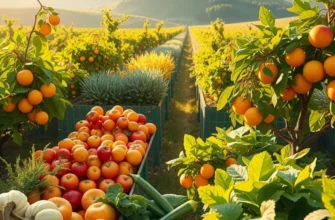Every cuisine tells a story, woven together by traditions, tools, and techniques. From the spice-laden kitchens of India to the hearty taverns of Italy, the culinary tools embody the essence of cultural heritage and gastronomic artistry. This exploration delves into how these unique instruments not only serve functional roles in food preparation but also act as vessels carrying age-old customs from generation to generation. Let’s embark on a cultural and flavorful journey through the tools that shape global cuisines.
Culinary Essentials: The Tools of World Cuisines

The diversity of global cuisines is reflected not just in ingredients but also in the tools used to craft them. These tools often have deep historical roots, bolstered by traditions and regional flavors. Each culinary instrument tells a story, enhancing not just taste but also the preparation methods unique to every culture.
Take the Moroccan tagine, for example. This iconic earthenware pot is designed for the slow simmering of stews, producing dishes infused with rich flavors. Its conical lid traps steam, allowing the food to self-baste, which is crucial for tenderizing meat and blending spices. The tagine is more than a simple cooking vessel—it’s a centerpiece in Moroccan households, often shared among family and friends during meals.
In Italy, the pasta maker is a testament to the country’s dedication to perfection in pasta. This simple yet effective tool has transformed humble ingredients like flour and eggs into an array of pasta shapes and sizes. Rolling and cutting dough by hand preserves the texture and airiness essential to authentic Italian pasta, reflecting a deep respect for tradition.
Meanwhile, Japanese cuisine is defined by precision, exemplified by the sashimi knife. Crafted with extreme care, these knives are designed for slicing fish with minimal pressure, preserving the integrity of the ingredients. The sharpness of a sashimi knife, often maintained using specific whetstones, underscores the Japanese philosophy of balance and respect for natural flavors.
In India, the tandoor oven showcases a unique approach to cooking. This clay oven, heated to soaring temperatures, is key to creating the charred and smoky flavors characteristic of naan and tandoori dishes. The tradition of using a tandoor demonstrates a historical melding of cuisines, influenced by numerous trading cultures over centuries.
The mortar and pestle is another universal tool appearing across various cultures, from Mexico to Thailand. Each culture adapts it to local uses—grinding spices for mole or crushing chilies for curries. The physical act of grinding releases oils and flavors that electric appliances often miss, making it indispensable for creating depth in flavor profiles.
Explore more about the culinary influences of trade on global cuisines.
These tools not only enhance flavors but also preserve traditions and foster a connection to cultural heritage. They illustrate the beautiful interplay of design, function, and culinary art, reminding us that what we use to cook is as important as the ingredients themselves. Embracing such tools enriches our understanding of world cuisines, allowing us to experience dishes as they were meant to be enjoyed.
From Tradition to Modernity: Adapting Old Tools for New Visions

Culinary traditions often carry with them an array of tools, each honed through centuries of cultural refinement. These tools, crafted from materials like clay, stone, and wood, encapsulate the essence of the cuisines they serve. Today, as chefs and home cooks integrate technology into the kitchen, these ancient tools are seeing a revival—imbued with modern twists that enhance their utility and aesthetic.
A quintessential example is the traditional fermentation pot. Historically used across cultures for preserving vegetables, grains, and meats, these earthen vessels have been integral to foods fermented for both flavor and preservation. Recent culinary trends have sparked a renewed interest in fermentation as a method to craft unique and complex flavors. Modern iterations of these pots often come with adjustable vents and are sometimes integrated with digital humidity and temperature controls, allowing more precise fermentation processes while still honoring ancestral techniques.
Clay and stone cookery, fundamental to many ancient cuisines, is another practice meeting modern ingenuity. Clay pot cooking, prevalent in Asian and Mediterranean traditions, offers a gentle and even distribution of heat. This method preserves moisture and intensifies flavors—qualities that are further amplified today using novel stove technologies that focus on energy efficiency and temperature consistency. Chefs have started experimenting with these ancient techniques in contemporary dishes, marrying rustic preparation with avant-garde presentation.
Stone cooking surfaces, such as those used in traditional pizza ovens or for searing meats, are being adapted with materials like soapstone or composite resurfacing to create non-stick, easy-to-clean interfaces that maintain the original heat-retaining properties. In this way, the authenticity of stone-cooked foods is preserved while meeting modern standards of convenience and hygiene.
Fusion also thrives in the delicate intersection of traditional handcraft and mechanical precision. One such example is the mortar and pestle, once carved by hand from marble or basalt. While still cherished for its unparalleled ability to release the essence of spices, the classic tool has seen mechanical adaptations such as motorized grinders—ideal for commercial kitchens with high throughput demands yet aiming to retain the nuanced quality only achieved through manual grinding.
Observing this genesis of tools reveals how deeply linked the past is to our current culinary innovations. This marriage of antiquity and technology not only redefines utility but also enhances the appreciation for traditional techniques, inviting chefs and diners alike to explore the depths of global flavors. For those interested in sustainable food practices, tools rooted in tradition could offer insights into low-waste cooking methods, as discussed in eco-smart kitchen practices.
This evolving dialogue between the ancient and the modern in kitchen tools is more than a mere blending of eras. It is a testament to the resilience and adaptability of culinary arts, ensuring that traditions are not lost but continually reborn with each new generation of culinary artisans.
Final words
Understanding global culinary tools opens a window into culinary heritage, reinforcing the idea that cooking is deeply rooted in culture and tradition. Each utensil and piece of equipment is a storyteller, imparting knowledge and techniques uniquely associated with its region. From hands-on traditional methods to modern adaptations, these tools continue to evolve while honoring their origins. Embark on your culinary adventure, and let these instruments guide you in exploring diverse flavors and cuisines. By embracing these traditions, we ensure these vibrant culinary tales endure for generations to come.








